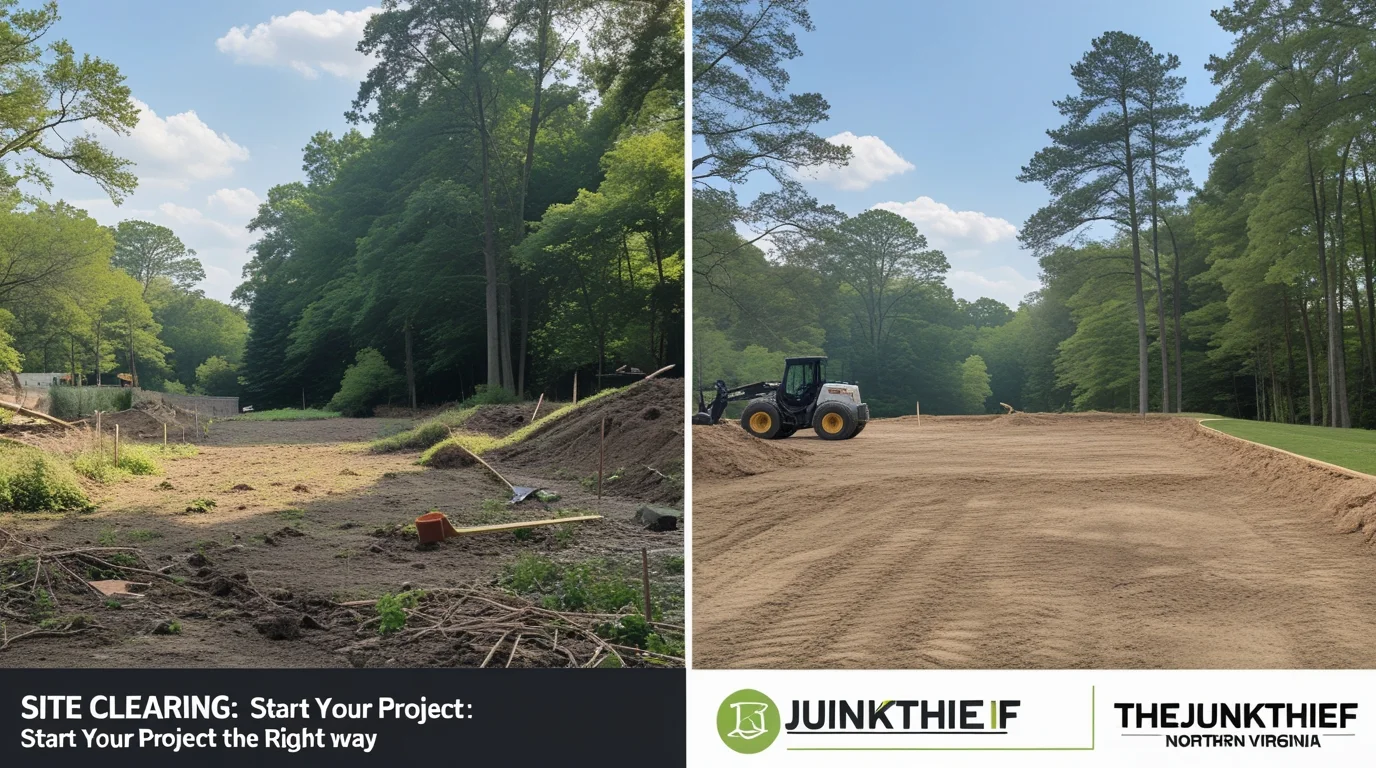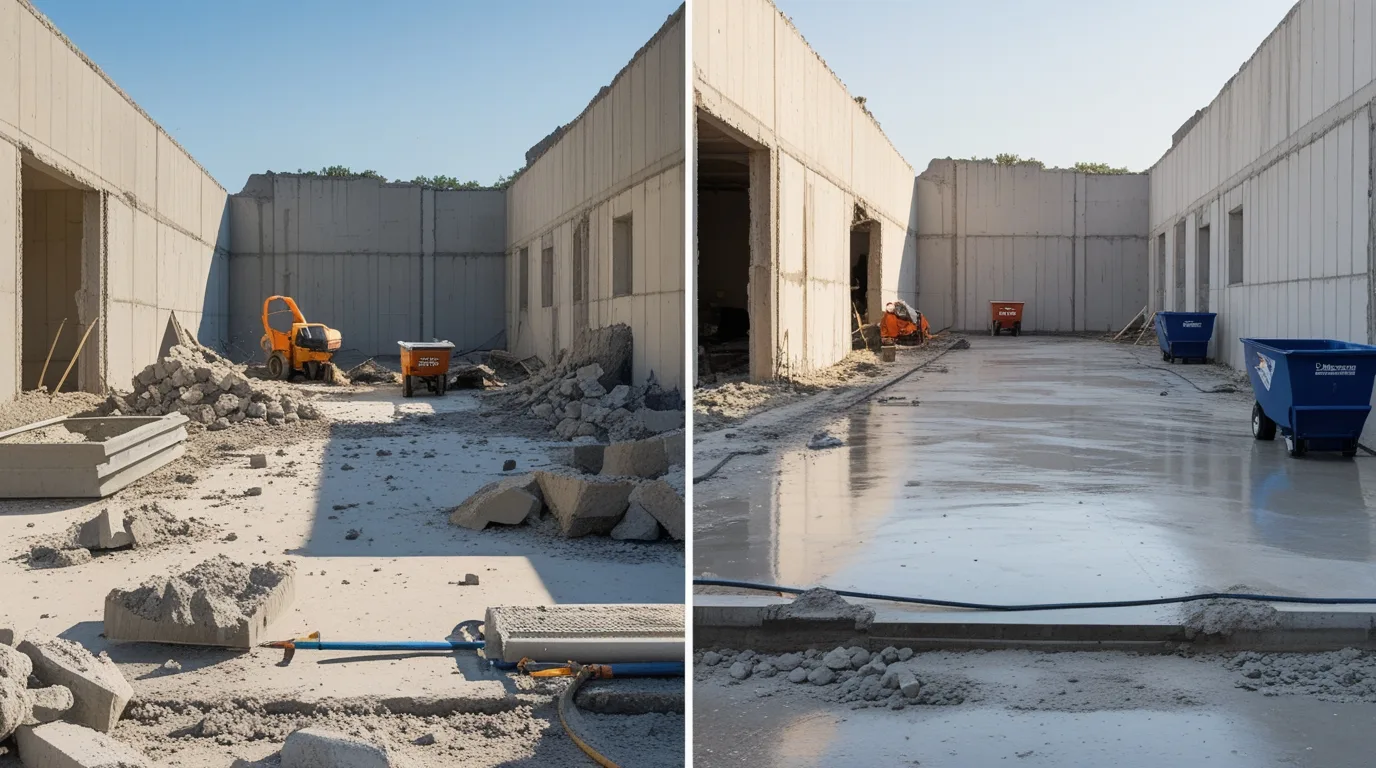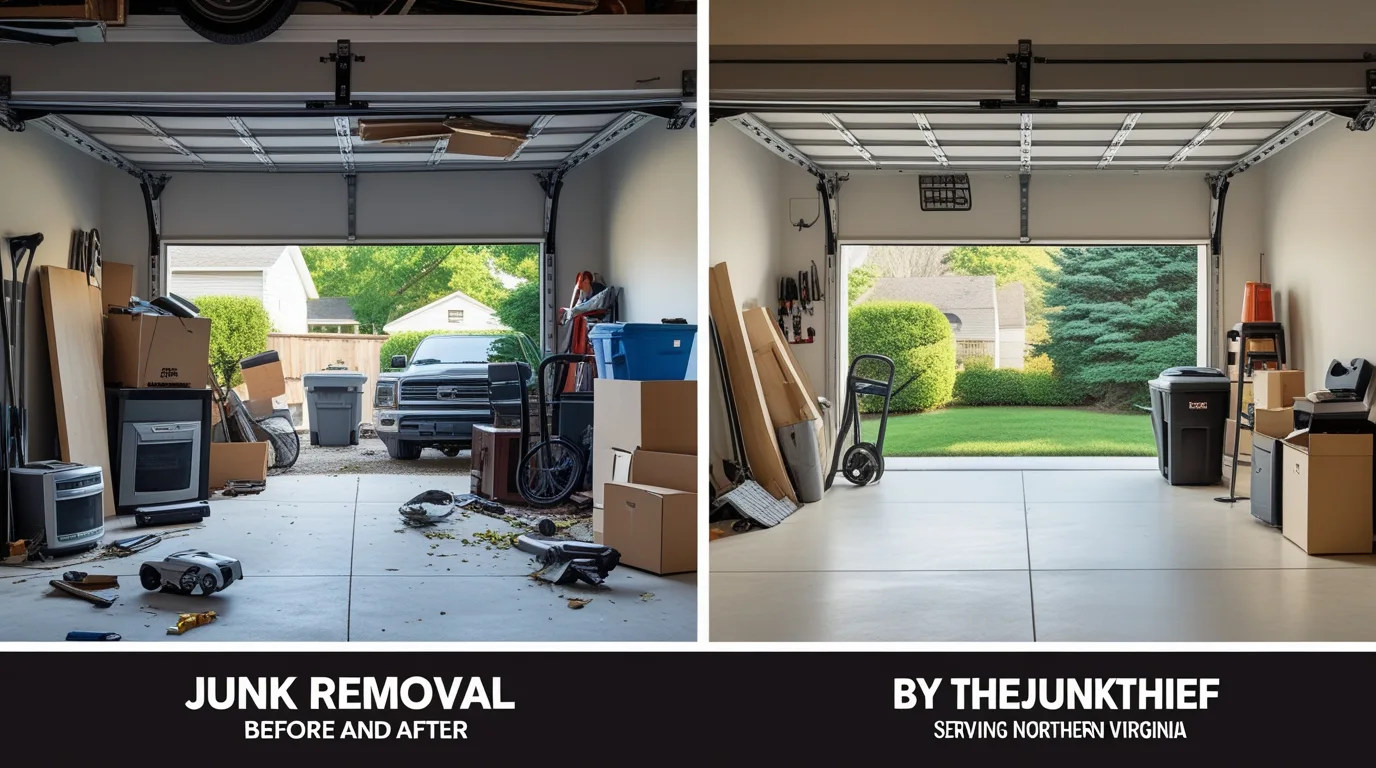Why Site Clearing Matters Before Any Construction Begins
Before any construction project starts, something important must happen: site clearing. This is the first real step in getting the land ready to build on. It’s not just about cutting down trees or removing old things. It’s about making the space clean, safe, and ready for what comes next. Without proper clearing, everything that follows, like digging foundations, laying pipes, or building walls, gets harder. Hidden tree roots, leftover bricks, or uneven ground can cause delays or extra costs. That’s why professionals always begin with clearing the land first.
Whether you’re building a house, a garage, or something bigger, a good site clearing job lays the foundation for success.
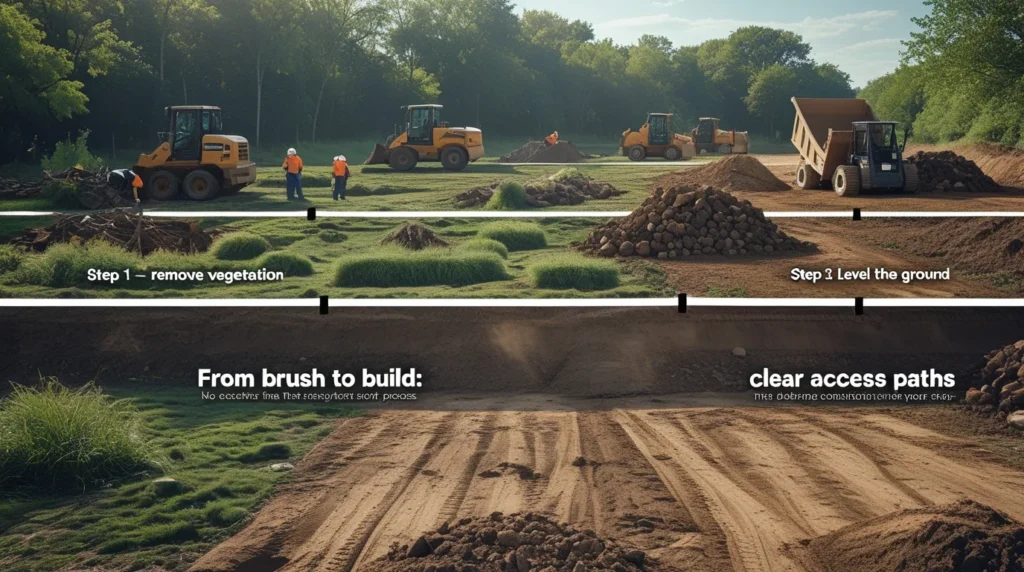
From Brush to Build: What Happens During Site Clearing?
Site clearing is more than just taking things away. It’s a full process with steps that make sure the land is really ready.
Here’s what usually happens:
- Remove vegetation: Trees, shrubs, grass, and weeds are cleared away.
- Haul off debris: Rocks, stumps, and trash are collected and removed.
- Level the ground: Bumpy or uneven areas are smoothed out.
- Clear access paths: So trucks and machines can move around easily.
In bigger jobs, crews use machines like bulldozers and skid steers to do the heavy lifting. For smaller jobs, hand tools might be enough. No matter the size of the job, everything must be done carefully. This keeps the space safe and avoids problems during later stages of building.
Understanding Site Clearance in Construction Projects
In construction, site clearance means getting rid of everything that doesn’t belong on the land you plan to build on. That includes trees, fences, bricks, scrap metal, and more.
But why is this so important in construction?
- Safety: Old structures or junk can be dangerous.
- Access: Builders need clear paths for trucks and tools.
- Timing: Delays happen when you skip the clearing phase.
- Quality: Clean land helps avoid cracks, floods, or unstable buildings.
When done right, site clearance in construction makes the job smoother and helps everyone stay on schedule. That’s why it’s one of the first steps on almost every worksite.
Land Clearing and Site Preparation: What’s the Difference?
People often mix up land clearing and site preparation. But they are not the same.
- Land clearing is about removing things on the surface, like trees, rocks, and debris.
- Site preparation focuses on getting the ground ready, like leveling, grading, or digging.
Here’s how they work together:
- First, crews clear the land of plants, old materials, and trash.
- Then they start preparing the land by grading and marking where to dig.
Think of it like cleaning a room before painting. You move the furniture and trash first. Then you prep the walls before picking up a brush. Both steps are needed to build something strong and long-lasting.
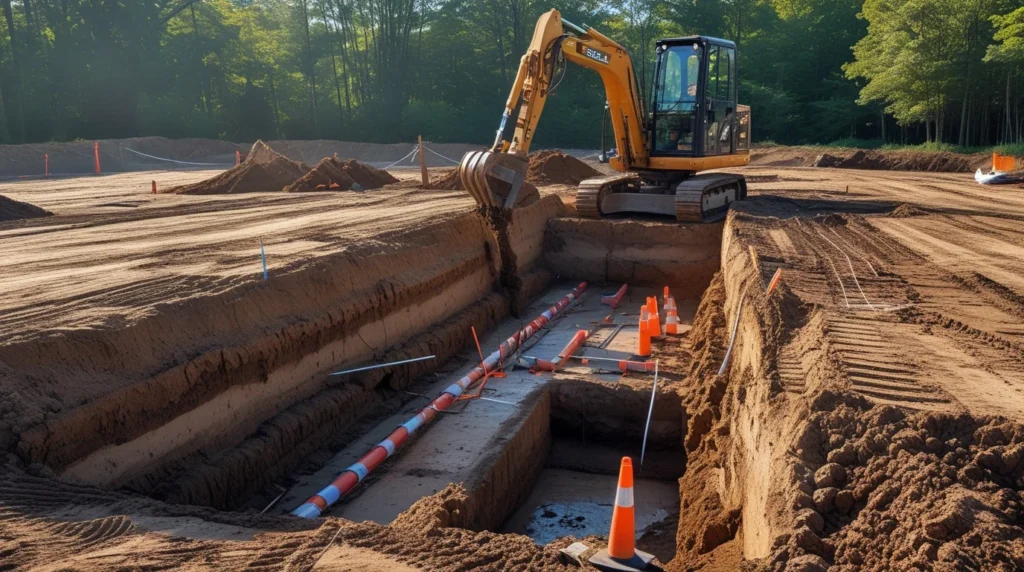
Site Clearing and Excavation: Working Below the Surface
Once everything above ground is removed, the next step is to work below the surface. That’s where site clearing and excavation meet.
Excavation means digging into the soil for many reasons:
- To lay pipes or wires
- To create a level base for a driveway or home
- To install septic tanks or storm drains
This stage uses heavy machines and skilled operators. A mistake here could mean extra costs or delays later on. That’s why the best contractors handle both clearing and excavation together. It makes the process faster, safer, and more reliable.
Commercial Site Clearance: Bigger Projects, Bigger Planning
When it comes to commercial site clearance, things get more complex.
Here’s why:
- The land area is much larger.
- There are more rules and permits.
- The debris often includes concrete, metal, and large equipment.
- Timing matters because commercial projects are often on strict deadlines.
Crews working on these jobs use large bulldozers, dump trucks, and grading equipment. They may also need to remove parking lots, street signs, or even foundations from past buildings. Good planning is the key. Every step must be carefully mapped out. A missed detail could affect not just the build, but the safety of the public later on.
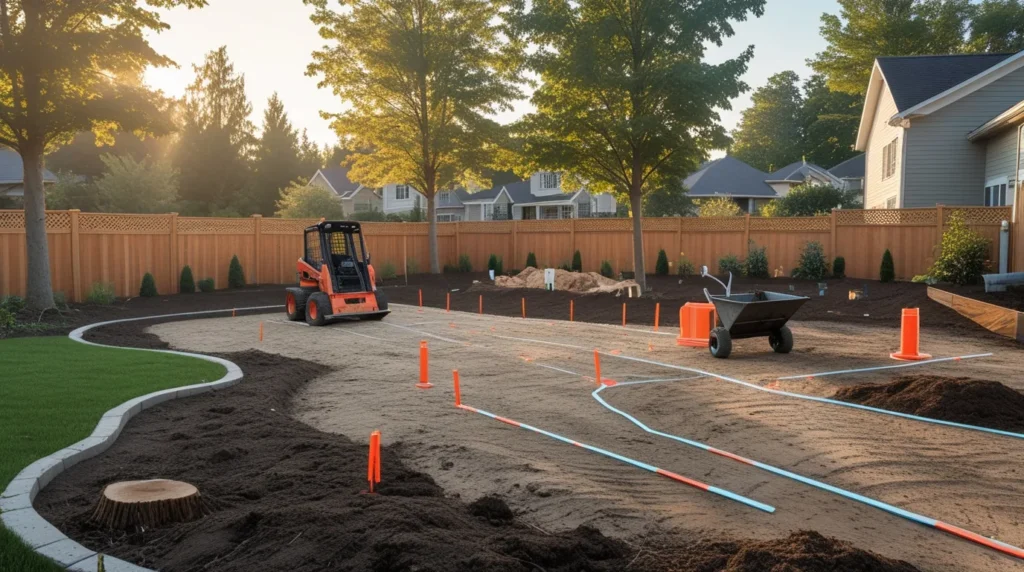
Building Site Clearance: What Homeowners Need to Know
If you’re building a new home, adding a shed, or planning a garden expansion, you’ll need building site clearance.
Here’s what homeowners should think about:
- Trees: Can you remove them legally? Do you need a permit?
- Boundaries: Make sure you’re not clearing your neighbor’s land.
- Drainage: Is the land graded to drain water away from your home?
- Utilities: Always check for underground lines before digging.
Hiring professionals like the team at thejunkthief can make this easier. They know the local laws, understand the best tools to use, and help you avoid costly mistakes.
Even small projects need proper clearing to prevent problems in the future.
Grading and Site Preparation: Getting to the Ground Level
After clearing the land, the next step is grading and site preparation. This means shaping the ground so that water flows the right way and buildings can sit evenly.
Why is this so important?
- Prevents flooding
- Protects foundations
- Improves access for vehicles
- Makes future landscaping easier
Crews use grading tools, like skid steers or laser levels, to shape the soil just right. Once that’s done, the land is compacted and tested to make sure it’s solid. Without proper grading, water could pool around your home, or the driveway could crack. That’s why this step is never skipped.
Learning the Land: Tools, Teams, and Timelines
Clearing the land takes the right team, tools, and timeline. Here’s how it usually works:
Tools used:
- Chainsaws for trees
- Skid steers for moving dirt
- Excavators for digging
- Dump trucks for hauling away debris
Who does the work?
- Clearing contractors who know how to handle machines and follow safety rules
- Site prep experts who test the soil, mark boundaries, and grade the land
How long does it take?
- A small yard may take a day or two.
- A full home site might take a week.
- Larger commercial sites can take several weeks or more.
Good planning keeps things moving fast. That’s why experienced teams like thejunkthief always start with a walk-through and a clear plan before the machines roll in.
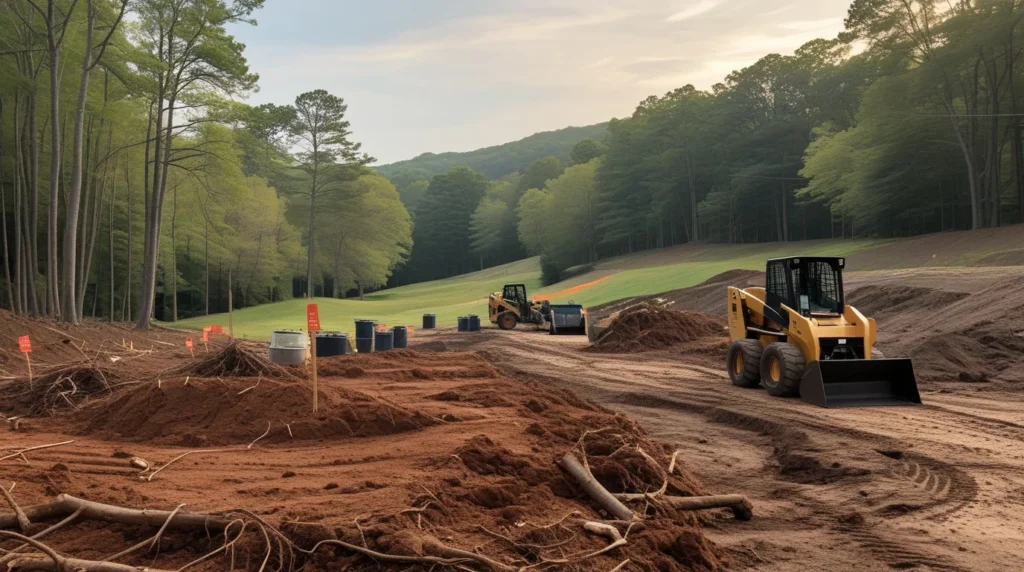
Local Focus: Site Clearing Services in Northern Virginia
In Northern Virginia, not all land is the same. Some areas have hills. Others are packed with clay soil. And in many places, trees are protected by local laws.
That’s why site clearance services in this region require local knowledge and attention to detail.
Crews working here need to understand:
- How to follow county and city permits
- What types of equipment work best on Virginia soil
- When to bring in environmental inspectors
- How to haul debris without damaging roads or yards
Local pros also know which materials can be recycled and where to take them. That means less waste and lower costs. It’s more than just cutting down trees. It’s doing it the right way, with the right crew.
Ready to Build? Start with a Cleared Site
Whether you’re starting a small garden or a large commercial project, one thing is always true: you need a clean, clear, and level site to begin. Site clearing may not be the flashiest part of the job, but it’s one of the most important. It protects your investment, saves you time, and helps your project stay on track. With the right tools, team, and timeline, you’ll have a safe, solid space ready for whatever comes next.
Looking for trusted help? The Junk Thief is ready to clear your land the right way. Book your free estimate today and get the job started with confidence.

